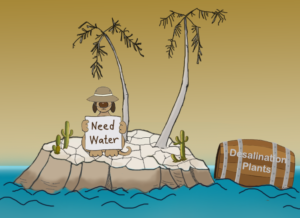
At the 26th United Nations Climate Change Conference in Glasgow, Scotland, one phrase echoed around the podiums: 1.5℃. Such a small number may seem insignificant in comparison to the vast size of the Earth, but in reality, it has become the subject of climate change for over 200 countries globally. Global warming has evidently increased in a trend dating back all the way before the industrial times and has recently drawn attention to its immediate, disastrous environmental effects.
1.5°C represents the benchmark of the increase in Earth’s temperature that nations worldwide hope to avoid and limit. By the year 2100, scientists hope that limiting rising temperatures by 1.5℃ will wane a history of environmental issues, including flooding and droughts. However, the exponential decrease of global warming will not happen without change; wealthier nations such as the United States have committed to pledges to convert to renewable energy and recently joined a push to reduce methane emissions (NPR).
With the incorporation of political disagreements in the mix of the problems, surpassing the 1.5℃ mark may not only seem inevitable—but soon. Scientists believe that being transparent about the reality of climate change goals is the best course of action, even if that means missing the goal completely. Carl-Friedrich Schleussner, the head of Climate Science at the nonprofit organization Climate Analytics, states that the global warming targets will not be met at all (Scientific American).
Industrial-developing nations and wealthier nations have always been large sources of greenhouse gas emissions, but smaller countries have always been the first to experience the effects. They have experienced alarming rising sea levels with floods, heat waves, and droughts. Large habitats and ecosystems, home to thousands of different species, have experienced the worst effects. The largest coral reef located off the coast of Australia, the Great Barrier Reef, has experienced a great drop in ecosystem life due to rising marine heat waves. Micro-algae, a major food source for corals, are expelled from the stress of increasing temperatures. Coral polyps starve, and they lose their color, resulting in coral bleaching where all that’s left to be seen is the calcium carbonate skeleton underneath. Since 1980, marine heat waves have doubled in number and intensified in temperature, leading scientists to believe that 70% to 90% of coral reefs will be dead by the 1.5°C mark (NPR).
Day by day, our lives don’t seem to be drastically affected by the slowly rising trend of global temperatures. However, the alarming accumulation of these small increments hints at the necessity of more unifying change within the climate change industry.
Works Cited
Harvey, Chelsea, and E&E News. “The World Will Likely Miss 1.5 Degrees C—Why Isn’t Anyone Saying So?” Scientific American, 11 Nov. 2022, www.scientificamerican.com/article/the-world-will-likely-miss-1-5-degrees-c-why-isnt-anyone-saying-so/.
Sommer, Lauren. “This Is What the World Looks like If We Pass the Crucial 1.5-Degree Climate Threshold.” NPR, 8 Nov. 2021, www.npr.org/2021/11/08/1052198840/1-5-degrees-warming-climate-change.







